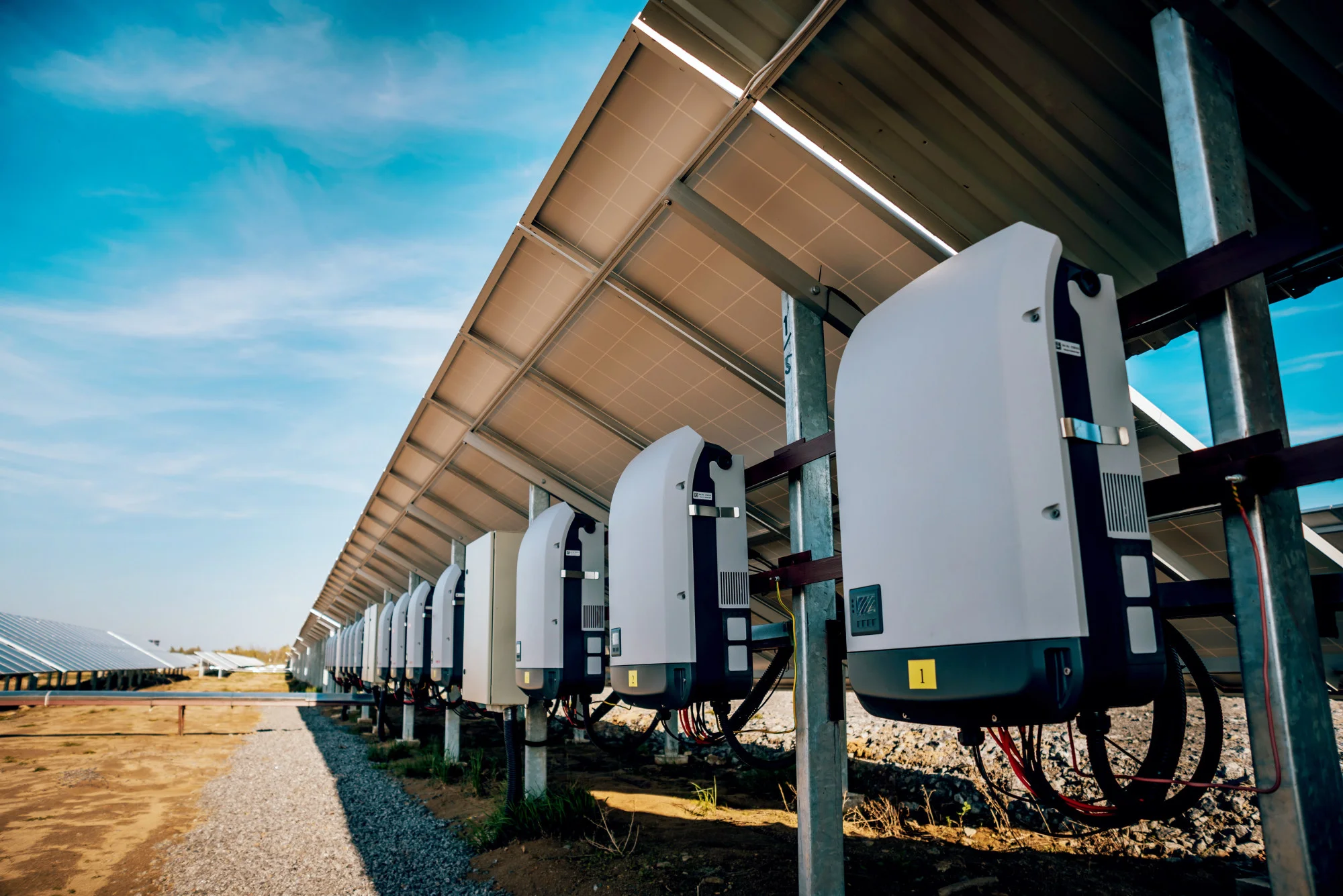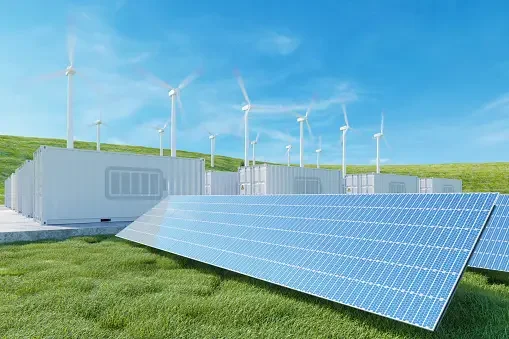The Ultimate Guide to Solar Energy Storage

Do you need more solar power generating capacity to meet your energy needs during peak usage hours? Are you worried about your power going out if your solar panels can’t produce enough energy?
Well, you should start considering solar energy storage. It’s the best way to hedge against the variability of solar energy and maintain a steady power supply.
If you’ve never heard of storage capacity for solar energy, don’t worry. This article will tell you all you need to know about the topic. So why not keep reading to find out more?
Table of Contents
What is Solar Energy Storage?
It is harnessing, converting, and storing solar energy for future use. It is an essential part of a solar-powered system.
It allows the energy stored from the sun to be used when the solar panels aren’t receiving enough energy from sunlight. Solar energy storage solutions include batteries, thermal energy storage systems, and hydrogen power energy systems.
What Are the Different Solar Energy Storage Solutions?
The different solar energy storage solutions come in many forms. It includes battery, hydrogen storage, pump, and thermal storage.
One of the most commonly used options is battery storage. It can store the energy generated by the solar panels to be used when the sun is not out or the panels are not producing as much energy.
Hydrogen storage is a more advanced technology. It is where the heat generated from solar energy is used to create a gas which can then be used to generate electricity.
Pump and thermal storage allow the power from the solar panels to be stored either in the form of water pumped to a higher elevation or thermal energy trapped and stored in underground reservoirs. Each solution has merits and drawbacks. So it is vital to consider them carefully before deciding which would be best for you.
What Are the Advantages and Disadvantages of Each Solution?
Solar energy storage is an essential topic for any renewable energy generation customer. Grid-tied storage systems can increase the energy generated from the solar array and use stored energy during peak times. Battery-based systems provide backup power via batteries, and hybrid systems offer the best of both approaches.
But, there are disadvantages to each solution. Grid-tied systems need an existing, functioning grid to operate. They have the risk of power being shut off or lowered, limiting the amount of energy generated.
Battery-based systems have a limited lifespan due to the battery’s ability to store and transfer energy. They are expensive for a homeowner to install.
Hybrid systems are the most expensive and can be challenging to maintain. But offer the most reliable output and guarantees energy during power outages or periods of high demand.
What Are Some Installation Tips?
Considering the installation of solar energy systems is also essential. With storage, homeowners can rest easy knowing their energy needs, even on the sunniest and cloudiest days.
Installation tips for this storage include assessing the solar energy available. Also, watch out for local requirements before buying and starting the installation process. Then, get expert help for the installation process when possible.
Know how lithium-ion batteries behave in different climate conditions. It is also critical in designing an efficient system. For more installation advice, consider speaking to local experts and obtaining the necessary permits and inspections.
Investing in solar energy and its storage is not to be taken lightly. It should be done with extensive research and input from professionals. You can also ask them about solar modules.
How to Assess the Available Solar Energy?
Users can access local solar maps, which detail how much sunshine their area receives. Also, check the information on potential shadowing or shading that may affect the efficiency of the solar panels.
Next, installation experts can be consulted to examine the area. They can provide a viable, efficient solution that suits the user’s needs. Finally, monitoring the system’s performance over time helps users understand their current usage and modification needs.
How to Prepare the Necessary Permits?
Before homeowners can consider installing systems, they should prepare the necessary permits. Depending on the local regulations, this could include obtaining permission from the homeowner’s association, the local utility, or the state.
So, it’s essential to consult with an experienced solar energy provider. You can verify that the home is up to local standards for installation. They can also help identify any rules for installing the systems in the area.
They may also need permits from the local planning commission to install. Once all the necessary paperwork is completed, homeowners can begin installing the storage systems and lower their dependence on the local grid.
What Inspections Are Needed?
Inspections must be conducted to ensure the quality and usability of a solar energy storage unit. It will identify potential problems, correct any deficiencies, and track the condition of the unit. Inspections should include visual assessments of physical components and electrical systems.
Testing related electrical components and a comprehensive system inspection to ensure proper operation is also essential. Further checks should be made if the energy storage unit is exposed to the elements. Focus on weather-related damage should be conducted.
What Are the Maintenance Needs?

Here are the necessary steps to properly maintain a solar energy storage system. It covers topics such as preventative maintenance, diagnostics, and troubleshooting scenarios.
It is vital to perform regular preventative maintenance tasks. It can include inspecting the solar array, inverter, and solar battery enclosures, checking for corrosion or dirt buildup, and verifying the battery electrolyte levels.
Diagnostics should be conducted to investigate and troubleshoot any intermittent or unusual occurrences in the system. It includes testing key components such as the charger controller or energy storage unit. Performing periodic load tests is also essential to ensure the system can store and deliver energy when needed.
What is the Recommended Solar Setup?
Understanding what is required for a successful solar setup is vital. A successful solar setup involves carefully designing and sizing the system, ensuring it meets the user’s energy needs.
Storage batteries are an essential part of any operating solar energy system. These batteries provide a backup energy source when the sun isn’t available. Most solar setup requires the correct-sized batteries that provide enough electricity during peak usage.
The type of solar battery chosen should be compatible with the inverter. It must be correctly sized to provide enough storage capacity for the required energy.
A quality deep-cycle battery lets users choose the most economically viable energy storage options. With the correct setup, solar energy storage can provide reliable, clean energy that has the potential to save the user money.
How Much is the Cost Estimate?
Cost estimates for solar energy storage systems vary widely. Factors to consider will include:
- System size
- Capacity
- The type of energy storage device
- The number of batteries
- Other system components
Generally, solar energy storage systems can range between $10,000 to $12,000 per kilowatt hour. To get an accurate estimate of the cost of a system, it is vital to talk to knowledgeable industry professionals and installers. Residents should also check with local, state, and federal incentive programs.
It will determine if any incentives can lower the cost of purchasing and installing the system. Taking the time to do the research will help homeowners decide if investing in a solar energy storage system is right for them.
What Are the Benefits of Solar Energy Storage?
Solar energy storage systems can provide steady and reliable power with the right system even when the sun isn’t available to generate electricity. It means less reliance on traditional power sources, lowering electricity bills.
Other benefits include powering buildings and homes completely off-grid and helping reduce carbon footprint. Solar energy storage also offers excellent protection from natural disasters. It can safely store electricity even during a power outage.
Solar storage systems allow energy to be converted when demand is highest. It generates more savings on electricity costs.
It explores these benefits in-depth. It also provides an overview for anyone wanting to learn more about solar power and its storage capabilities.
What Is Its Role in the Global Energy Industry?
Solar energy is vital to the industry’s goal of replacing fossil fuels with renewable energy sources. Solar energy storage systems are an essential component of any solar energy system. With proper investment and use, these systems can provide reliable energy to countries and businesses worldwide.
They also help decrease energy costs, resulting in savings. The guide is an invaluable resource for energy providers.
It provides them with best practices for using solar energy and various storage systems. With proper usage, these systems can help to drive the global energy industry towards renewables and away from fossil fuels.
How to Maximize the Efficiency of Your System?
Some tips to maximize efficiency include choosing the right type of storage for your environment and lifestyle. Understand the most critical energy storage components. Ensure the system can handle your potential energy needs.
You’ll also want to determine how much capacity your system needs to supply your needs. Consider battery capacity and type, inverters, and other components. Ensure that your battery and inverter are correctly sized.
It will provide a steady output, and your system is connected efficiently to the solar grid. Finally, ensure you understand how to track and maintain your system to keep it running at optimal performance. With these tips in mind, you’ll be sure to maximize the efficiency of your solar energy storage system.
How to Track and Maintain Your System?
Proper monitoring and maintenance will ensure the system remains efficient and can produce the most energy. Begin by tracking energy generation regularly. Ensure that any equipment is calibrated correctly.
Regularly clean and inspect solar panels and other hardware. The dirt and debris can affect the system’s efficiency. Also, be sure to check the environment around your system.
Extreme weather or other conditions can affect energy production. Regularly check the battery levels.
Adjust settings to ensure the efficiency of your solar energy storage system. Doing all this can help you maximize the efficiency of your system. It will ensure that it continues producing the most energy possible.
What Are the Components of Solar Energy Storage?

The essential components of solar storage include solar panels or modules, batteries, inverters, and connection hardware. Solar panels are the devices used to capture the sunlight and convert it into usable electricity. Battery packs are needed to store the energy produced by the solar panels.
While the inverter converts the DC power to AC power, the connection hardware is necessary to install and connect the system to the existing electrical grid. All these components are essential to a successful and efficient solar storage system.
What Are the Financing Options?
One of the best ways to finance this technology is through a loan or a Power Purchase Agreement (PPA). It can be used to lower the overall cost of energy storage systems.
But other solar financing options exist, such as leasing, rebates, and incentives. These can be used to reduce the overall cost of the system.
Utility companies may have programs to help customers with the costs of solar energy storage systems. These incentives often cover a majority of the cost. It has the potential to greatly diminish the initial expense. Follow This Guide to Make the Most of Solar Energy
Implementing solar energy storage in your home is an effective way to reduce your energy costs. It has the capacity to foster a lifestyle characterized by enhanced sustainability. With the proper research and analysis, you’ll be able to find the most suitable and cost-effective energy storage solutions for your home.
Explore your options and start saving today!
Did you find this information helpful? If you have already done so, we encourage you to explore the remaining sections of our website to discover additional enlightening articles.


